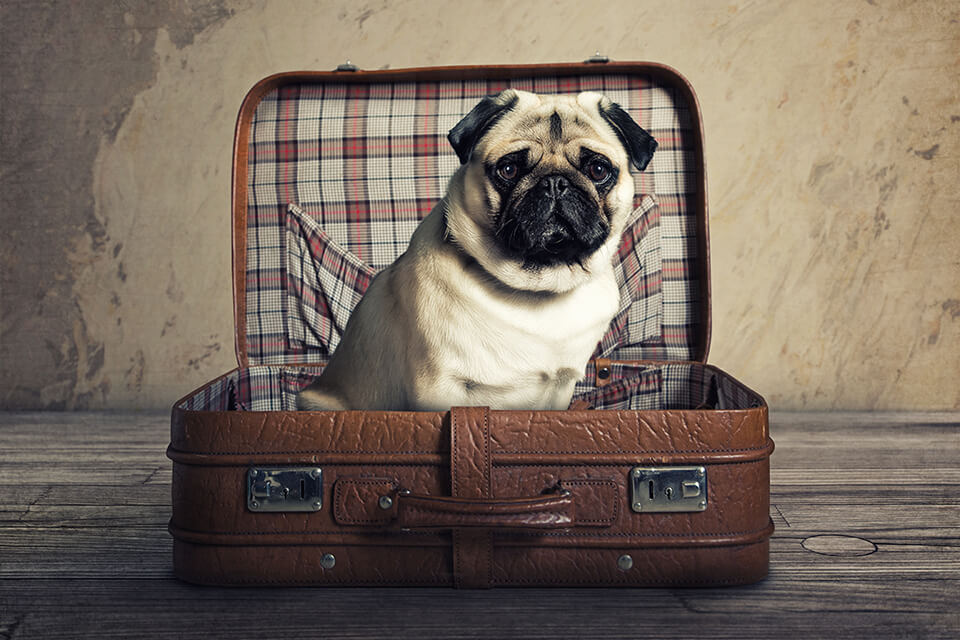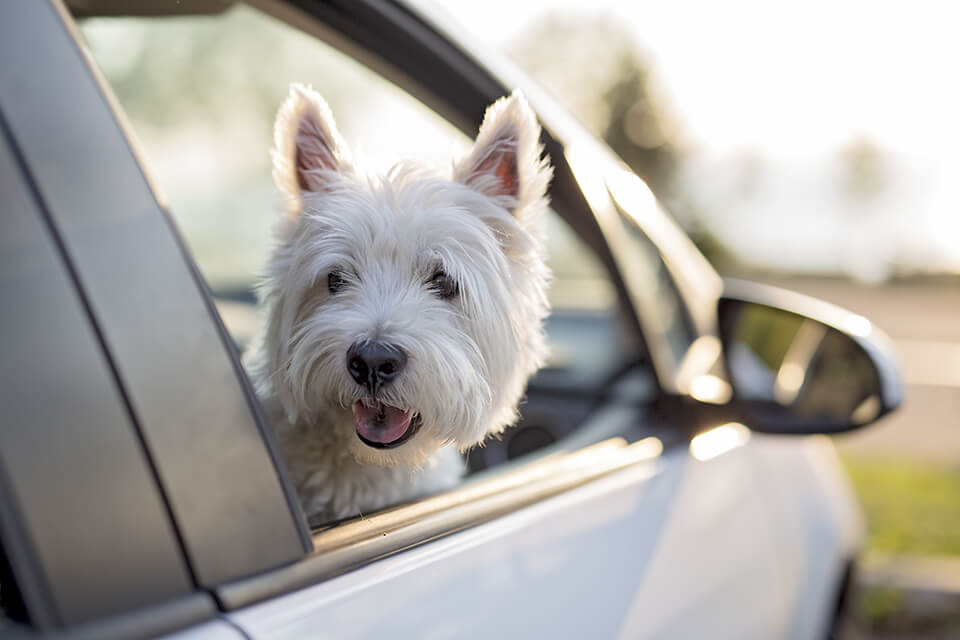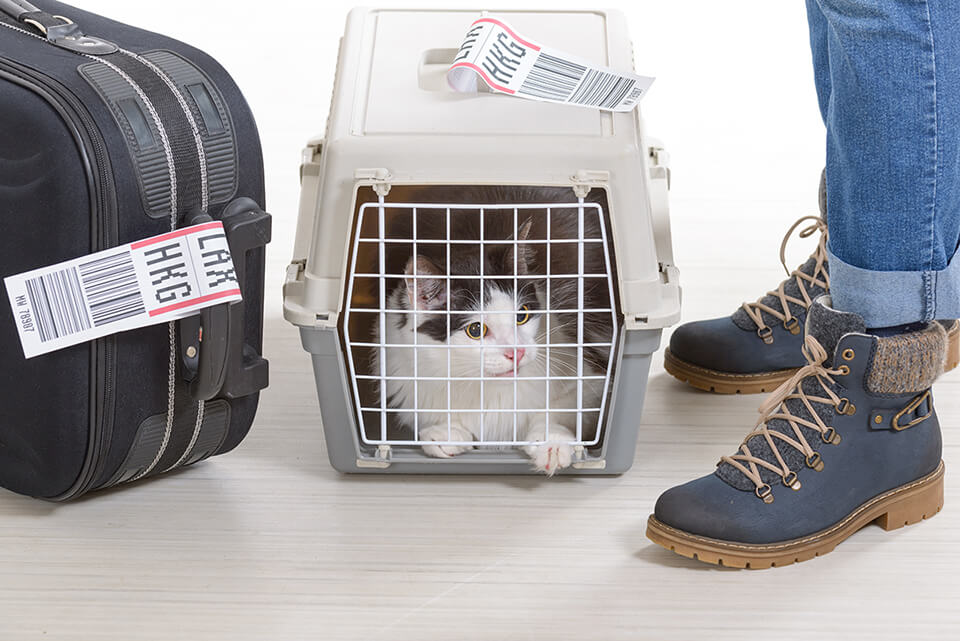Traveling Internationally With a Dog – Everything You Need to Know
When traveling internationally with a dog, you need to be aware of specific rules and requirements when it comes to moving with pets. It’s not as easy as just taking your furry friend with you in transporter to the new home. There are some regulations that you need to be familiar with to prepare for the process properly and keep the animal safe and healthy.

You probably have a lot of questions, and you’re not sure where to start. You might feel overwhelmed at the moment, but everything can be handled smoothly when you follow certain steps. Here are some crucial things to keep in mind when traveling with your furry friend to your future home in another country.
Make Sure You Take Your Dog to the Vet
If you’re planning an international move with your canine friend, the first step is to take your dog to the vet. It is of crucial importance to check your pet’s health to be sure it is healthy enough to travel all the way to another part of the world. In addition to this, you will also be required to submit your pet’s medical records and a health certificate, which is to be filled out by your vet. Another crucial thing to remember is that your veterinarian has to be accredited by the USDA.
Ask Your Vet to Fill out a Health Certificate
Be sure you have the health certificate filled out before you book a flight. You won’t be able to travel with dogs anywhere without the required paperwork, or any other pets, for that matter. It would be best to bring a bilingual health certificate. In case you’ve decided to travel to Canada and make it your future home, it has to be signed by a USDA or CFIA accredited veterinarian.

Check Country-Specific Requirements When Traveling Internationally With a Dog
Different countries have different rules and regulations when it comes to relocating with your canine friend. You need to check country-specific requirements when moving with dogs before you plan anything else. Even if you’ve already moved with your pet before, but it’s a different destination this time, you shouldn’t assume that the procedure is the same. There might be significant differences depending on your future home, so gather additional information.
Get Your Dog Vaccinated and Microchipped Before Leaving the States
Despite all the differences, there are some same requirements a majority of countries impose to regulate the import of animals. These include microchips and vaccinations, primarily against rabies. If your pet doesn’t have a microchip implanted already, you’ll need to take care of this crucial step.
As for the rabies vaccination, most countries require that your pet is vaccinated against rabies at least 30 days before you enter the country. Be careful in which order you take these steps. When dogs have been vaccinated before the microchip, it is required to have them vaccinated against rabies again after the implantation.

Will Your Dog Be Welcome in the New Country?
In addition to rabies vaccination and microchips, some countries also have some rather strict rules when it comes to certain breeds. Some of the most commonly banned breeds include Pit Bulls, Rottweilers, Staffordshire Bull Terriers, and Dogo Argentinos. For example, New Zealand allows the import of only pure-breed dogs. Again, depending on your chosen country, these rules may differ, so you’ll need to look for specific regulations regarding your dog’s breed.
Make Sure You Have Someone to Take Your Pet if Necessary
You should have a backup plan in case it turns out that you’re not allowed to take your beloved companion with you. Do not try to cheat, as some places have such strict rules that they might even euthanize your dog or at least send it back at your expense. Either way, it’s not worth the risk. Thus, it is a good idea to ask someone you trust to adopt your furry friend in a worst-case scenario.

Find out Whether Your Pet Will Need to Spend Time in Quarantine
One of the potential requirements that most owners fear the most is quarantine. It might happen that you won’t have to leave your pet in quarantine at all if some other requirements are met. But, just in case you are supposed to do so, be sure you find more information about this in advance.
Ask About Quarantine Requirements Well in Advance
Given that some countries have rather strict requirements when it comes to quarantine time, you should think about this far before you start getting ready for air travel. For instance, in case you decide to relocate to Japan, your pet will be required to spend as long as six months in quarantine.

Check the Rules of Different Airlines for Flying With a Pet
Different airlines have different rules when it comes to flying with your pet. Thus, before you book your flight, be sure you’ve picked the right airline. It is essential that you learn more about these rules and check whether you’re allowed to travel with your furry friend in the first place. The airline you’ve chosen might have some specific regulations, so ask for those, too.
Can You Take Your Pet to the Cabin?
Once you make sure that dogs are allowed to travel by plane, it’s time to find out where exactly these pets are kept during the flight. Don’t forget that most airlines allow only small dogs to be taken to the cabin, while larger breeds are only allowed to travel in the cargo hold. Again, ask for some specific information about your chosen airline.

Summary
Even though there are quite a few things to keep in mind when traveling with your canine friend, it is worth the trouble, given the role these fascinating creatures play in our lives. Be careful not to miss any of these crucial steps not just because of all the rules and regulations, but to keep your pup healthy and safe, too. Do whatever you can to travel without any stress or anxiety and enjoy the ride.